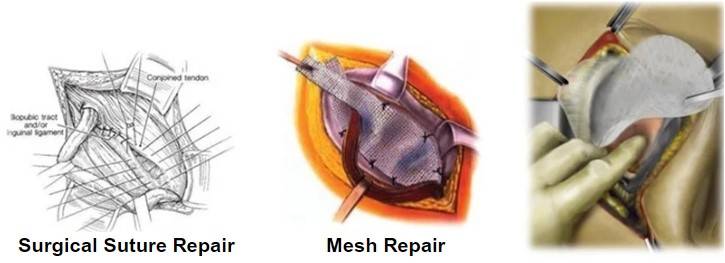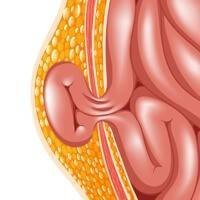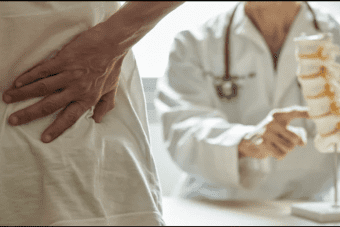Epidemiology
Hernias are a common disease among young children, mostly occurring in males. Due to an unclosed congenital canal in male groins, about 27% of men will suffer from hernias. Women have a lower risk of suffering from this disease, at a rate of about 3%.
What are Hernias?
Hernias, also known as “intestinal prolapses”, refer to masses formed by protruding internal organs from the abdominal wall. Most hernias will not heal on their own and cannot be treated with medication. As such, surgery is the only cure. If left untreated, the hernia has a change of growing in size. If the protruding organ becomes “stuck”, it will affect the flow and blood supply of the intestines. It may also cause serious complications such as intestinal infarction or bowel necrosis.
Inguinal hernia - Symptoms
- A hemispherical lump appears in the lower abdomen or inner thigh
- Pain occurs when coughing, standing, or straining, and the lump retracts when lying flat, and the symptoms subside
- Severe abdominal pain, vomiting, or fever in case of strangulation
Causes and High-Risk Groups
Main Causes: Weakness of the abdominal wall muscles (surgical scars, ageing and prostatic disease in male etc.)
Triggers:
- Prolonged increase in abdominal pressure (such as constipation, coughing, lifting heavy object)
- Pregnant women (increased abdominal pressure from the growing fetus)
- There is a higher incidence of inguinal hernia in males because in males the spermatic cords and their blood vessels run through the inguinal canal to the testis in the scrotum
Diagnosis Methods
- Most cases of the inguinal hernia can be detected by clinical examination alone
- Concealed hernias (such as femoral hernias) may require ultrasound, MRI or CT scans for assistance
Treatment
Surgeries can be divided into two types:
- Minimally Invasive Hernia Repair
The doctor only needs to make three small incisions in the patient's abdomen (about 0.5 to 1.0 cm size) and then insert slender surgical instruments. Using the same three wounds, both left and right side groin hernias can be operated on during the same operation session. The operation involves reducing the hernia and using synthetic mesh to occlude the abdominal wall defect. Because the incisions are small, this approach lowers the risk of infection and minimizes postoperative pain, allowing patients to be discharged on the same day. The doctor may also inspect other parts of the abdominal cavity with the endoscope to rule out early hernias in other areas. This type of operation requires very light general anaesthesia. - Open Surgical Method
Open groin hernia repair can be done under local anesthesia, regional anesthesia, or general anesthesia. The traditional method of suturing the muscle gap with stitches has a higher recurrence rate. Nowadays, most hernia surgeries utilize synthetic mesh to occlude the hernia defect and reinforce the muscle layers, which remains permanently in the body.
The main materials used for these meshes include polypropylene or polyester. These materials have been in use for decades and are considered to have a high safety profile.
Open groin hernia surgery addresses only the hernia on the operative side. The surgeon is unable to examine the surrounding groin area or the contralateral side for potential concurrent hernias. Also, the surgeon cannot repair the other groin hernia using the same wound.

FAQ
1. How to Prevent Hernia?
- Protect Abdominal Muscles: Engage in moderate exercise, maintain a healthy weight, and avoid injuries
- Reduce Abdominal Pressure: Ensure smooth bowel movements, quit smoking, and treat chronic coughs
- Dietary Recommendations: Increase intake of high-fiber foods and reduce starch and fat
2. What risks arise if a hernia is not treated in time?
Once a hernia is detected, prompt treatment is necessary; delaying medical attention may cause the opening to widen, causing more intestinal contents to be trapped within the hernia sac, or even within the scrotum. Additionally, delaying treatment may result in bowel obstruction, affecting blood flow, and in severe cases, can lead to bowel necrosis.
3. Who Are the High-Risk Groups?
- Patients with chronic lung disease or liver cirrhosis with ascites
- Kidney disease patients requiring abdominal dialysis
- Pregnant women























